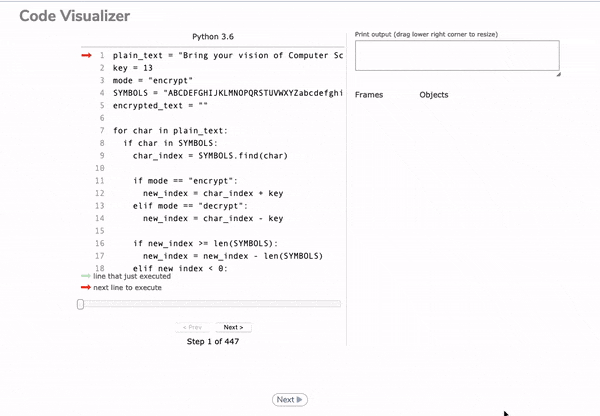Less Text and Greater Interactivity Improves Student Engagement and Performance
As teachers around the world have been forced to rapidly move their courses online, it’s worth going over some research-backed implementation strategies.
Reduce Text
Minimizing text to the most critical points while using other representations such as images and tables to express details results in higher learning gains. [1] In digital modalities, you can use videos for students to follow along with and other interactive elements to engage students in the material.
Research has shown that less text (approximately 50% of the original) improves aspects of learning like completion time, amount remembered, and student satisfaction by 58%. [2] Shorter texts have also been shown to double student learning gains between pre and post-tests, and increase student satisfaction by 26%. [3]
Mix and Match Resources
Every teaching context is different—LMSs and other platforms allow you to easily combine resources. Pull from Open Educational Resources whether they are textbooks, websites, videos or activities. This curation of materials can help focus course material on important points while presenting multiple explanations—the pedagogical work one would typically do during class time.
This curation, while time-consuming, has tangible benefits. Research “shows greater student retention and performance when faculty members become engaged with the classroom materials.” [5]
“Live Coding”
If you have gone asynchronous, record your screen while programming to model the process of experimenting, reading error messages, and fixing mistakes. When you make a mistake, don’t edit it out! Acknowledge it—these situations provide an opportunity to model that you can learn from mistakes and they are a normal part of computer science and the learning process. [6]
Research shows that live coding “makes the process of programming easy to understand for novice programmers... helps students learn the process of debugging, and... exposes students to good programming practices.” [7]
Free eBook: Strategies for Online Instructional Materials
Add Interactivity
As you reduce text, you can replace passive reading with interactivity in a few different ways. There is, of course, adding practice exercises (whether they are graded or not), but you can also add visualizations and Parson’s problems to help students think about code at a really low or really high level.
One study, which measured student performance with interactive web-native content against the performance of students with static web content, found that “the average improvement score was 16% higher for participants given the interactive web-native content than the static web content.” [8]
Visualization
A lot of Computer Science is invisible, so using a visualization or simulation tool can help students “see” what is happening under the hood of their code. Abstract concepts like function calls, recursion, data structures, and scope can be concretized with a little animation.
 Previous research has found that students who interacted more with an earlier version of the Python Tutor code visualizer outside of class had statistically significant higher midterm exam grades. Additionally, use of the visualizer outside of class was correlated with the students’ performance on the three unannounced quizzes. [9]
Previous research has found that students who interacted more with an earlier version of the Python Tutor code visualizer outside of class had statistically significant higher midterm exam grades. Additionally, use of the visualizer outside of class was correlated with the students’ performance on the three unannounced quizzes. [9]
Parson’s Problems
Writing code is a time-consuming task for students. So in addition to asking students to predict the output of existing code, Parson’s problems offer another way to expose students to code without requiring large amounts of time.
-3.gif?width=600&name=ezgif_com-video-to-gif%20(4)-3.gif) While normally constructing Parson’s problems is a lot of work - you can check out our free, open-source tool that allows you to create Parson’s problems in a matter of minutes. You can also host your created Parson’s problems for free on Github—simply use our template repo and easily copy and paste code from our generator.
While normally constructing Parson’s problems is a lot of work - you can check out our free, open-source tool that allows you to create Parson’s problems in a matter of minutes. You can also host your created Parson’s problems for free on Github—simply use our template repo and easily copy and paste code from our generator.
Research shows that while Parson’s problems take “significantly less time than fixing code with errors or than writing the equivalent code... there was no statistically significant difference in the learning performance, or in student retention of the knowledge one week later.” [10]
Additionally, as students make their way through units and semesters, the amount of work they do decreases. However, Parson’s problems have been shown to be one of the most engaged with features on interactive platforms despite the drop off in student completion of tasks. [11]
References
[1] Edgcomb, A., Vahid, F., & Lysecky, R. (2015, October). Students learn more with less text that covers the same core topics. In 2015 IEEE Frontiers in Education Conference (FIE) (pp. 1-5). IEEE.
[2] Nielsen, J. (1997, October 1). How Users Read on the Web. Retrieved May 14, 2019, from https://www.nngroup.com/articles/how-users-read-on-the-web/
[3] Edgcomb, A., et al. (2015, October).
[4] [2] Edgcomb, A., Vahid, F., Lysecky, R., Knoesen, A., Amirtharajah, R., & Dorf, M. L. (2015, June). Student performance improvement using interactive textbooks: A three-university cross-semester analysis. In the Proceedings of the ASEE Annual Meeting.
[5] Open Text Books: Making education more accessible. (n.d.). Retrieved May 14, 2019, from http://opentextbookalliance.org/wp-content/uploads/2017/03/Open_Textbook_Alliance_Guide.pdf
[7] Adalbert Gerald Soosai Raj, Jignesh M. Patel, Richard Halverson, and Erica Rosenfeld Halverson. 2018. Role of Live-coding in Learning Introductory Programming. In Proceedings of 18th Koli Calling International Conference on Computing Education Research, Koli, Finland, November 22–25, 2018 (Koli Calling ’18).
[8] Edgcomb, A., & Vahid, F. (2014, June). Effectiveness of online textbooks vs. interactive web-native content. In 2014 ASEE annual conference.
[9] Alvarado, C., Morrison, B. B., Ericson, B., Guzdial, M., Miller, B., & Ranum, D. L. (2012). Performance and use evaluation of an electronic book for introductory Python programming.
[10] Ericson, B. J., Margulieux, L. E., & Rick, J. (2017, November). Solving parsons problems versus fixing and writing code. In Proceedings of the 17th Koli Calling Conference on Computing Education Research (pp. 20-29). ACM.
[11] Ericson, B. J., Guzdial, M. J., & Morrison, B. B. (2015, July). Analysis of interactive features designed to enhance learning in an ebook. In Proceedings of the eleventh annual International Conference on International Computing Education Research (pp. 169-178). ACM.



